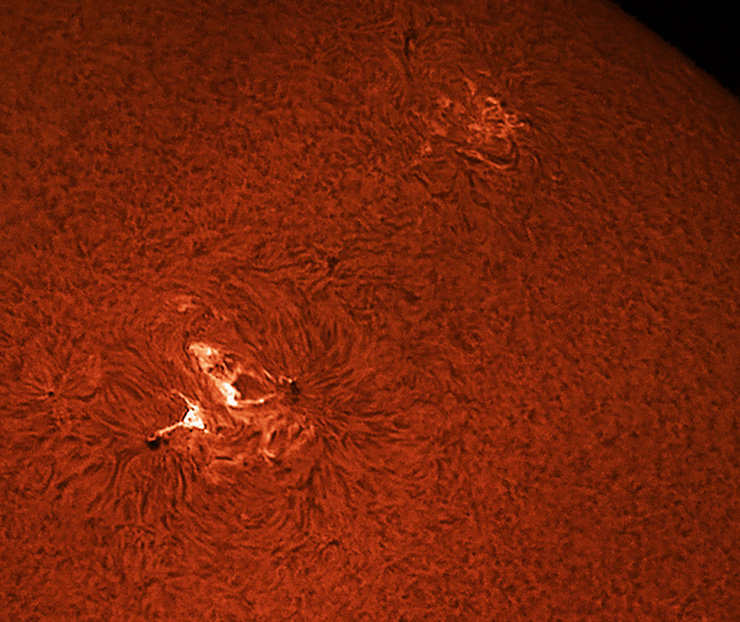|
3/7/2011. AR1166 took its turn at fireworks this morning. I caught the GOES 5-minute X-ray curve on the rise and let my morning coffee grow cold while I carried the LXD55-mounted Lunt to a sunny spot in the lawn, hooked up a battery and the netbook, then watched and photographed a fast-developing, long-duration M-class flare in AR1166. Looky:
LS60THa50DS, Point Grey Chameleon
I kept having to pick up the outfit and move it to keep the Sun out of the pinetops, else it would have been a great morning to try my first time-lapse imagery. When I first looked, the flare wrapped like a snake around the active region; by the time I got the camera running, it was a semi-circular arc, smaller but intense. And by the time I got the images above, the best focused and tracked of the bunch, it was as you see it. It would have been a lovely movie. That's a project for later in the spring and summer, when the Sun clears the tops of the trees for hours at a time. Here's a downpayment on an eventual time lapse video: a simple two-frame Flash clip showing the changes in this area between the first frames and the ones used to produce the images above (which, by the way, put me back on Spaceweather dot com for the third time this week; I'm just sayin'). The clip encompasses 16 minutes:
This afternoon there's an even bigger flare in progress, but the Sun is completely clouded out for me.
03/12/2011. Many active regions today, none of them doing anything startling, but several putting on good shows. Here are a couple of images, just to try a few things. The surface shots are done with half of the usual exposure time (2ms vs 4ms) with a few more db of signal gain (17db vs 15db). This looks like a pretty good change as it seems to help preserve detail in fast seeing although the overall effect seems harsh and "unsmooth." Needs either more or less work. The edge detail was photographed with 30ms exposures rather than 64ms and for that reason or some other, the sharpness is better there, too, with no evident downside.
|
:: top ::
© 2011, David Cortner




